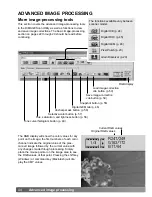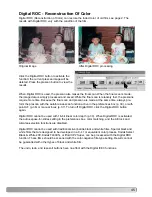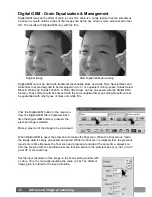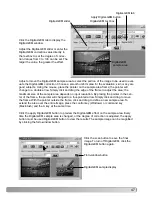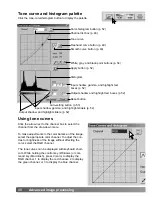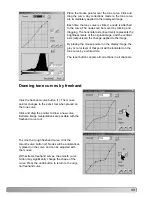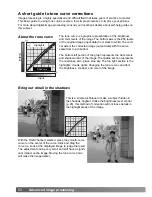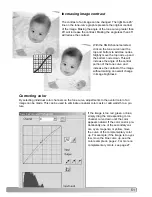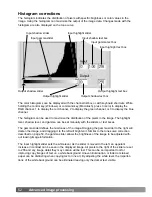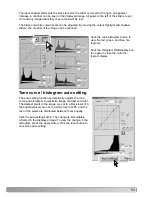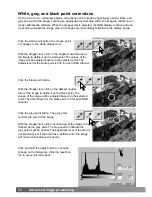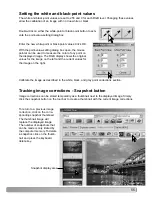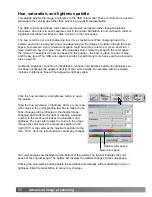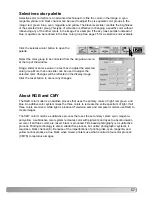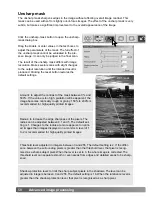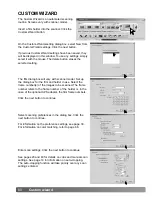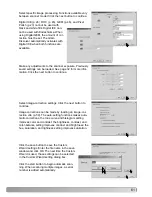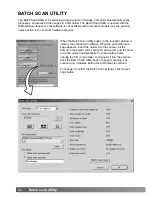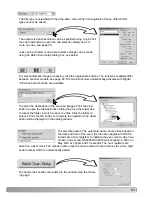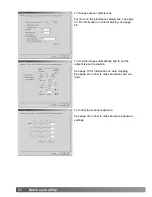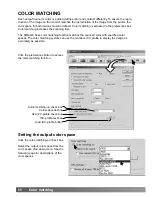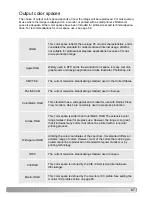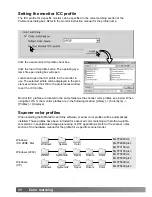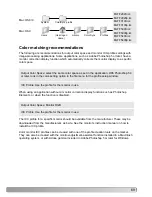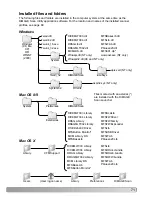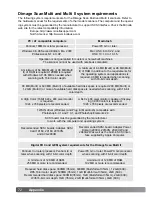
57
Selective-color correction is an advanced technique to refine the colors in the image. A cyan,
magenta, yellow, and black channel can be used to adjust the six separate color groups in the
image: red, green, blue, cyan, magenta, and yellow. The black-level slider controls the brightness
of the selected color group.This type of correction is effective in changing a specific color without
influencing any of the other colors in the image. For example, if the sky looks purplish instead of
blue, magenta can be reduced in the blue color group. See page 75 for a selective-color example.
Selective-color palette
The RGB color model is an additive process that uses the primary colors of light: red, green, and
blue. An additive color system mixes the three colors to recreate the entire spectrum of light. If all
three colors are mixed, white light is produced. Television sets and computer monitors use RGB to
create images.
The CMY color model is a subtractive process that uses the secondary colors: cyan, magenta,
and yellow. A subtractive color system recreates color with pigments and dyes to absorb unwant-
ed color. If all three colors are mixed, black is produced. Film-based photography is a subtractive
process. Printing technology is also a subtractive process, but, unlike photographic systems, it
requires a black channel (K). Because of the imperfections of printing inks, cyan, magenta, and
yellow cannot produce a true black when mixed, printers use what is called a four-color process
(CMYK) to reproduce images.
About RGB and CMY
Select the color group to be corrected from the drop-down menu
at the top of the window.
Drag a slider or enter a value in a text box to adjust the selected
color group. More than one slider can be used to adjust the
selected color. Changes will be reflected in the display image.
Click the reset button to cancel any changes.
Click the selective-color button to open the
palette.


